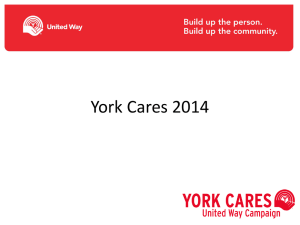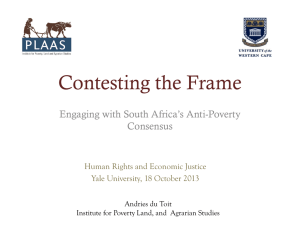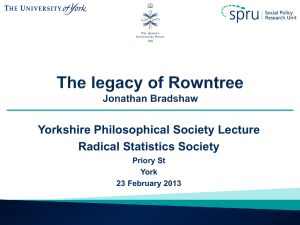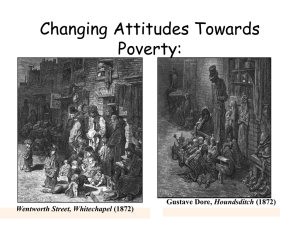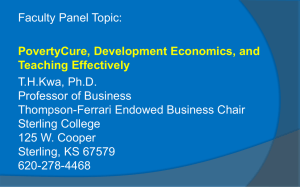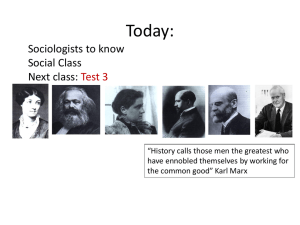CS 24 - Association of American Colleges and Universities
advertisement
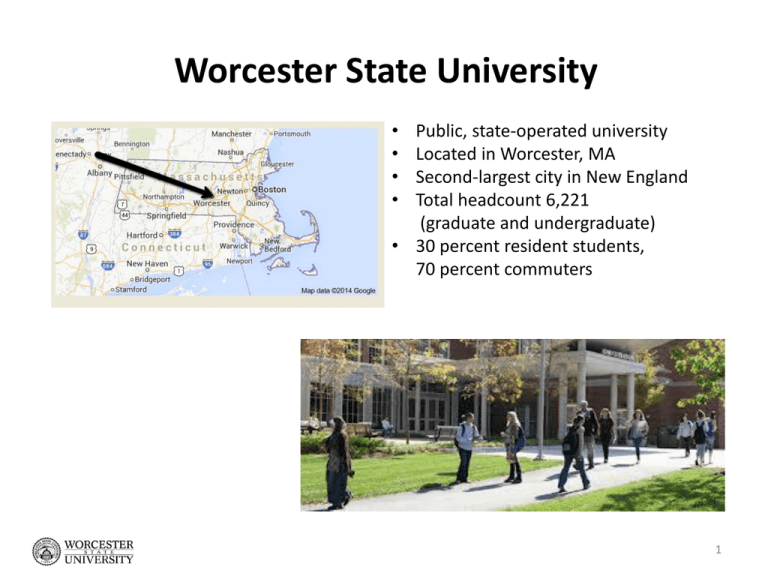
Worcester State University • • • • Public, state-operated university Located in Worcester, MA Second-largest city in New England Total headcount 6,221 (graduate and undergraduate) • 30 percent resident students, 70 percent commuters 1 Acknowledging the Institution’s Role in Student Success: It’s Not You, It’s Us. How Does Institutional Culture Influence Perceptions and Decisions about Diversity and Student Success? Angela E. Quitadamo, Director of Retention Patricia A. Marshall, Associate Vice President for Academic Affairs Participant Outcomes: 1. Deepen understanding of socioeconomic factors that impact institutional culture and behavior. 2. Consider institutional practices and organizational narratives that may be in conflict with the needs of our increasingly diverse student bodies. 3. Acquire practical examples of how Worcester State University has engaged in campus-wide, self-reflective practices that are transforming how we interact with students. I.Socioeconomic factors that impact institutional culture and behavior. Basic Premises about Institutional Culture A. “Schools and businesses operate from middle-class norms and use the hidden rules of the middle class. These norms and hidden rules are not directly taught in schools or in businesses.” (Payne, 7) B. “Colleges and universities are distinctive organizations. They are loosely coupled systems with diffused decision making, as well as goal ambiguity.” (Kotter, 120) Two contradictory assumptions about the causes of poverty that inform how students come to us and how we serve them. 1. Cultural poverty theory: Certain behaviors are incompatible with success (blame the student model argues that people find themselves in poverty due to their own actions). 2. Situational theory: Genesis of poverty is located in social structures (Shared realization that certain organizational structures perpetuate poverty and are not conducive to student success). No. Poverty is a complex sociological phenomenon and either/or assertions “have not served us well; it must be recognized that causes of poverty are a both/and reality. Poverty is caused by both the behavior of the individual and political/economic structures—and everything in between.” (Payne, 258) Cultural vs. Situational poverty theories and the Deficit Model: The “fix it” mentality and the “righting reflex” Payne, Deval, and Smith highlight the questions that we need to ask when we approach problem solving from the framework of a “fix it” mentality: 1. Who is it that names the problem? 2. Who is it a problem for? “The deficit model names the problem and blames the individual; the individual must change, whereas society can be left unaltered.” (Payne, 262) The Deficit Model in Action Labeling that is hard to shake Defines the design of programs (many times focused on staff needs and not student needs): --each department is expected to fix the piece of the pie that falls under its purview (silos) --random approach to problem solving that results in remedial programs focused on behaviors of the individual while losing sight of the whole system made up of families, neighborhoods, communities, and sociopolitical/economic structures Alternatives to the “Deficit Model”: The additive model when it comes to our lowincome students. --Many names: positive model, developmental assets, competency, value-based, strength-based. What would the additive model look like when applied to our low-income students? How can we validate the skills and experiences that our low-income students bring to campus? -- “To survive in poverty, individuals must have reactive, sensory, and non verbal skills. This means they have the ability to read situations, establish relationships, and solve immediate and concrete problems quickly.” (Payne, 265) II. Consider institutional practices and organizational narratives that may be in conflict with the needs of our increasingly diverse student bodies. How might we unintentionally be undervaluing the importance of relationships and other strengths that our low-income students bring to campus? “DO NOT RESPOND TO THIS EMAIL.” “I CAN’T HELP YOU. . . GO TALK TO …” “THIS WAS COVERED AT ORIENTATION.” “WHO TOLD YOU THAT?” Some Hidden Rules Among Classes: Time, Education, and Destiny Poverty Middle Class Time Present most important. Decisions made for moment based on feelings of survival. Future most important. Decisions made against future ramifications . Education Valued and revered as abstract but not as reality Crucial for climbing success ladder and making money Destiny Believes in fate. Cannot do much to mitigate chance (“fixed mindset” and it might even be perceived as negative to change one’s destiny.) Believes in choice. Can change future with good choices now. Adapted from Bridges out of Poverty, changes in italics. Hidden Rules Among Classes on Campus Poverty Example Time Present most important. Decisions made for moment based on feelings of survival. If you are having trouble finding money to pay for food or medical care, it is difficult to focus on the future. The basic needs in the present are the student’s priority. Just-in-time delivery. Education Valued and revered as abstract but not as reality Student has every intention of returning to school, but never does. Destiny Believes in fate. Cannot do much to mitigate chance Student gives up and justifies his/her actions by saying that it wasn’t meant to be or it wasn’t his/her fault. Adapted from Bridges out of Poverty And Demystify the Jargon! S.A.P. Judicial Provost Priority Deadline Eligibility FERPA Syllabus Catalog PNG Bursar Blackboard Registrar FAFSA Add/drop Appeal Probation A.D.A Accommodation Degree Audit CLEP GPA Semester Advisor CPT III. Acquire practical examples of how Worcester State University has engaged in campus-wide, self-reflective practices that are transforming how we interact with students. Transforming institutional narratives Addressing hidden rules through improved communication and relationship building Raising awareness of the power of language and how we communicate Kotter’s Eight-Stage Process of Creating Major Change • Establishing a Sense of Urgency • Creating the Guiding Coalition • Developing a Vision and Strategy • Communicating the Change Vision • Empowering Broad-Based Action • Generating Short-Term Wins • Consolidating Gains and Producing More Change • Anchoring New Approaches in the Culture Kotter, Leading Change, Page 23 SUCCEED IN 4 “Every member of the campus community adopts an attitude toward all students of, ‘Yes, you can succeed. And I will help you do so.’”—Dr. Charles Cullum, Provost (WSU) 4 year plans Early Semester Information Centers Faculty Fellow Director of Retention Increased training across university Increased focus on advising: Drop in advising How are we programmatically validating relationships? “. . . organizations with metaphors that recognize interdependence, connectedness, flexibility, process, and relationships will be positioned to work more effectively with people from poverty.” (Payne, 77) Moving from a deficit model to an additive model: Noel Levitz CSI RMS+: Predictive Retention Model How have we addressed our “fix-the student approach to doing business? “DO NOT RESPOND TO THIS EMAIL.” “I CAN’T HELP YOU. . . GO TALK TO …” “THIS WAS COVERED AT ORIENTATION.” “WHO TOLD YOU THAT?” Cutting the Red Tape: •Increased direct student support and outreach •Tracking questions to assess and close the loop •Communication audits: Are we communicating effectively with all of our students? •Process audits •Internal cross-divisional operations calendars 21 Mapping communication and adapting the messages that we are sending to our students. Early Results: Is it working? • WSU had an unexpected revenue increase comparable to 80 new students in the 2012-13 Academic Year • In the fall preceding our electronic early alert system implementation, 5.6% of WSU students were not in good academic standing. By the spring of 2013, that number decreased to 4.6% • Fall 2013 semester saw a 33% increase in the number of tutor requests in our Academic Success Office • Our semester to semester retention rates after implementing our early alert system and Noel Levitz surveys indicate a positive trend: Semester Persistence Rate Spring 2012 to Fall 2012 78.1% Spring 2013 to Fall 2013 80.3% Fall to Spring 2012 & 2013 80% 23 • WSU has seen an increase in our six-year graduation rate from 45.1% (2004) to 51% (2006) • WSU has seen undergraduate enrollment of Hispanic students rise from 6.5% in 2010 to 7.2% in 2012 Expanding the definition of “at-risk” students via CSI data Self-reported desire to transfer 35% 83% Students that returned following year 25 facebook.com/WSUStudentSuccess @WSUSuccess starfish@worcester.edu Angela E. Quitadamo Director of Retention Worcester State University aquitadamo1@worcester.edu Patricia A. Marshall Associate Vice President for Academic Affairs pmarshall@worcester.edu 26
